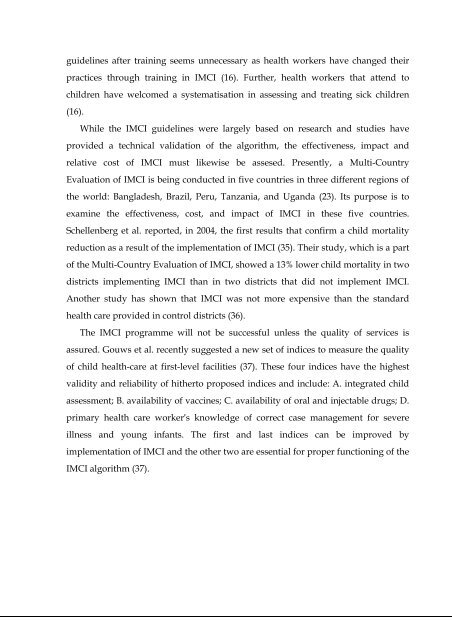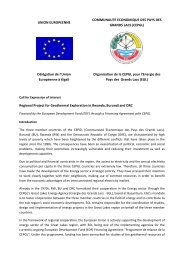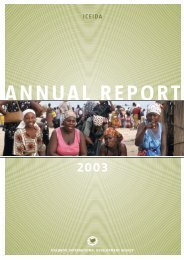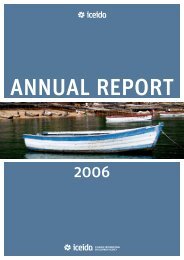The Implementation of Integrated Management of Childhood Illness ...
The Implementation of Integrated Management of Childhood Illness ...
The Implementation of Integrated Management of Childhood Illness ...
You also want an ePaper? Increase the reach of your titles
YUMPU automatically turns print PDFs into web optimized ePapers that Google loves.
guidelines after training seems unnecessary as health workers have changed their<br />
practices through training in IMCI (16). Further, health workers that attend to<br />
children have welcomed a systematisation in assessing and treating sick children<br />
(16).<br />
While the IMCI guidelines were largely based on research and studies have<br />
provided a technical validation <strong>of</strong> the algorithm, the effectiveness, impact and<br />
relative cost <strong>of</strong> IMCI must likewise be assesed. Presently, a Multi-Country<br />
Evaluation <strong>of</strong> IMCI is being conducted in five countries in three different regions <strong>of</strong><br />
the world: Bangladesh, Brazil, Peru, Tanzania, and Uganda (23). Its purpose is to<br />
examine the effectiveness, cost, and impact <strong>of</strong> IMCI in these five countries.<br />
Schellenberg et al. reported, in 2004, the first results that confirm a child mortality<br />
reduction as a result <strong>of</strong> the implementation <strong>of</strong> IMCI (35). <strong>The</strong>ir study, which is a part<br />
<strong>of</strong> the Multi-Country Evaluation <strong>of</strong> IMCI, showed a 13% lower child mortality in two<br />
districts implementing IMCI than in two districts that did not implement IMCI.<br />
Another study has shown that IMCI was not more expensive than the standard<br />
health care provided in control districts (36).<br />
<strong>The</strong> IMCI programme will not be successful unless the quality <strong>of</strong> services is<br />
assured. Gouws et al. recently suggested a new set <strong>of</strong> indices to measure the quality<br />
<strong>of</strong> child health-care at first-level facilities (37). <strong>The</strong>se four indices have the highest<br />
validity and reliability <strong>of</strong> hitherto proposed indices and include: A. integrated child<br />
assessment; B. availability <strong>of</strong> vaccines; C. availability <strong>of</strong> oral and injectable drugs; D.<br />
primary health care worker′s knowledge <strong>of</strong> correct case management for severe<br />
illness and young infants. <strong>The</strong> first and last indices can be improved by<br />
implementation <strong>of</strong> IMCI and the other two are essential for proper functioning <strong>of</strong> the<br />
IMCI algorithm (37).<br />
19
















